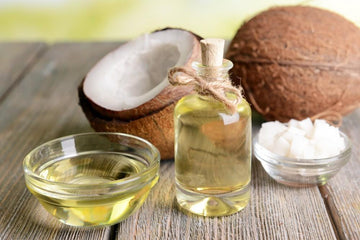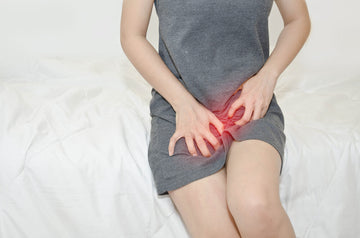Choosing the proper maternity pad after giving a start is critical for comfort, hygiene, and recuperation. Maternity pads are mainly designed to handle the heavy glide women enjoy postpartum, imparting superior absorbency and comfort. Unlike regular pads, they are longer, thicker, and crafted from smooth, breathable materials to save you from inflammation. Using the right pad enables keeping away from soreness, keeps the area dry, and decreases the hazard of infections. Comfort and cleanliness are crucial for this time to make certain healing, decrease skin irritation, and provide a sense of health. With the right pad, new mothers can focus on their recovery, knowing they are protected and comfortable overnight.
What Are Maternity Pads?
Maternity pads are specially designed for the postpartum period, and they can vary from regular pads due to their large size and higher absorbency. They are thicker and longer to deal with the heavier flow following childbirth. Made from soft, breathable materials, maternity pads support to prevent infection while keeping mothers comfortable and dry. The more absorbency ensures the pad can control large quantities of fluid without leaking. These functions make maternity pads perfect for new moms, providing the help wanted during recovery.
Why Does Post-Partum Bleeding Occur?
Postpartum bleeding is a natural part of recovering after childbirth. It happens when the uterus contracts and sheds the built-up lining during pregnancy, supporting the body to return to its previous condition. This bleeding, known as lochia, consists of blood, mucus, and tissue from the uterus. It is necessary for treatment and usually lasts for several weeks. The bleeding regularly decreases as the body heals, with the initial days often being the heaviest.
Why are Maternity Pads Important?
Especially maternity pads are designed to help new mothers during the recovery period after birth. Unlike regular pads, they are large, more utilized, and made with soft materials to offer comfort and prevent irritation.
1. Absorbency and Comfort:
They are mainly designed to handle heavy bleeding that occurs after the child's birth. They are bigger and thicker than normal pads, providing more protection. Their soft texture guarantees you stay comfortable as your body heals. The high absorbency keeps you dry, stopping leaks and helping you stay fit, even during the more excellent excessive postpartum stages. The combination of size, absorbency, and softness offers new mothers the support they need even as recovering.
2. Hygiene and Safety:
After birth, the body is more vulnerable to infections, making hygiene even more important. Maternity pads are light, hypoallergenic materials that are safe for sensitive skin. They do not contain hard chemicals or fragrances, reducing the risk of skin diseases or allergies. These pads clean and support recovery, helping you feel safe and comfortable during this critical time.
3. Coverage and Leakage Protection:
Maternity pads provide greater coverage and higher utilization than regular pads, which is important for handling bleeding after birth. Their size protects you from leaks, even if the bleeding is unpredictable. With more good absorbency, these pads lock in moisture, which means fewer adjustments are needed, and the hazard of leaks is minimized. This added protection helps new mothers enjoy their day without disturbing stains or pain.
4. Non-Irritating and Breathable:
The maternity is designed for sensitive skin also. They are made from breathable materials that permit air to circulate, keeping your skin dry and comfortable. This breathability helps you protect against the discomfort and infection that result from trapped moisture. Even when used for a long period, the maternity pads remain soft on the skin, making them an excellent choice for postpartum care.
5. Support During Healing:
Support is important during the postpartum time to recovery healing. Maternity pads provide soft protection, which helps reduce discomfort and facilitate therapy. They gradually cover these areas without irritating them and offer too much relaxation when the body is recovered. This protective layer allows new mothers to heal naturally without stress or problems.
6. Convenience and Ease of Use:
With the needs of newborn care, rest is important. Mothers are designed to be easy to use and get rid of. Many people have adhesive strips to keep them safe, so you don't have to worry about adjusting them continuously. This usability allows mothers to focus on the toddlers instead of emphasizing pad changes. Easy disposal helps maintain vaginal hygiene without further effort during this busy period.
7. Gradual Transition to Regular Pads:
As postpartum bleeding slows, maternity pads help mothers transition to regular sanitary pads. Their design permits an easy shift, offering comfort and assistance because the bleeding is reduced. These gradual changes ensure that mothers maintain hygiene and comfort without interruption, making the recovery process simpler and more manageable. Transitioning from maternity pads to normal pads is easy and supports mothers in adjusting to their new routines.
How to Choose the Right Maternity Pad?
When choosing maternity pads, keep these important factors in mind:
Absorbency Level:
To manage heavy postpartum bleeding, look for pads with high absorbency. This ensures the pad can handle more fluid without leaking, especially during the first few days, when bleeding tends to be heavier.
Material:
Choose maternity pads made of soft, breathable materials to ensure comfort. Breathing helps reduce moisture, which can cause irritation or discomfort. The soft material is also gentle on sensitive skin, especially postpartum.
Size and Shape:
Choose maternity pads that provide maximum coverage and fit securely to avoid leaks. Larger pads offer better protection, while pads in good shape can stay in place and provide the support you need without shifting.
Hygiene and Safety:
Ensure maternity pads are free of harmful chemicals, fragrances, or dyes. Since the skin after birth can be more sensitive, look for pads that have been tested dermatologically. Safe material helps reduce the risk of irritation or allergic reactions during recovery.
Conclusion
Choosing the right maternity pads is essential for postpartum comfort, hygiene, and safety. High absorbency pads assist in managing heavy bleeding, while gentle, breathable materials prevent inflammation and keep the skin dry. A proper coverage pad ensures leak safety, giving new mothers the confidence to move freely. Prioritizing hygiene and safety by deciding on chemical-free, dermatologically examined pads reduces the hazard of infections and skin reactions. With the proper maternity pads, new mothers can be conscious of their recuperation and caring for their newborns without fear. A smooth transition from maternity pads to normal pads further supports postpartum restoration.
FAQ’s
How Long Do You Bleed After Birth?
Postpartum bleeding lasts for about 4-6 weeks. It starts heavy and bright red and gradually becomes lighter. The flow decreases over time, but medical advice is required if the bleeding suddenly increases or large clots occur.
How Do You Use The Maternity Pads?
Place maternity pads inside the underwear, ensuring complete coverage. To maintain cleanliness, change it every 2-4 hours or when it is soaked. Breathing to prevent leaks and discomfort, opt for high-absorbed pads. Proper use helps in effectively managing postpartum bleeding.
How Many Days Should I Wear Maternity Pads?
Wear a maternity pad for about 2-3 weeks postpartum or until the bleeding decreases. Heavy-flowing pads are required initially, but light pads can be used as the flow decreases. Switching to a regular pad depends on individual recovery and bleeding level.
Are Maternity Pads Better Than Regular Pads?
Maternity pads provide good absorbency, better coverage, and comfort for postpartum bleeding. Unlike regular pads designed for menstrual flow, they prevent irritation and leaks. Their soft, breathing material ensures rest during sensitive postpartum recovery.
Do Maternity Pads Absorb Urine?
Maternity pads mainly absorb postpartum bleeding, not urine. They offer temporary absorption but lack the urinary-locking techniques found in adult diapers. For urinary incontinence, postpartum women should use special products designed for bladder leaks.





